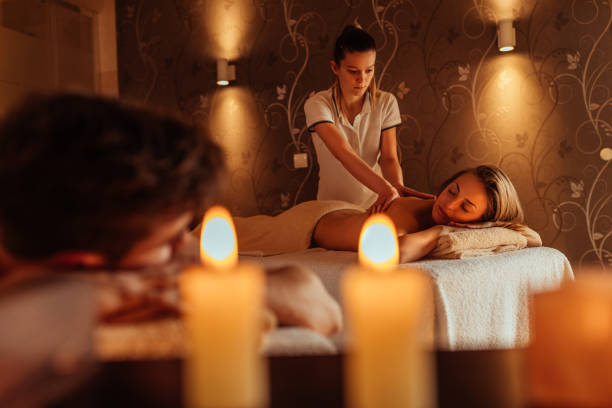
Massage is one of the oldest healing traditions. Many peoples – including the Chinese and Indians – were convinced of the therapeutic properties of massage and used it to treat ailments.
Massage therapy is the practice of kneading or manipulating a person’s muscles and other soft-tissue in order to improve their wellbeing or health. It is a form of manual therapy that includes holding, moving, and applying pressure to the muscles, tendons, ligaments and fascia.
The term ‘massage therapy’ is used to describe a wide variety of techniques that vary in the manner in which touch, pressure and the intensity of the treatment is applied.
Treatment of some disorders
Massage are effective in managing:
- subacute/chronic low back pain
- delayed onset muscle soreness (DOMS)
- anxiety
- stress
- soft tissue injuries
- high blood pressure
- insomnia.
They can also be effectively used to support people with:
- a chronic disease
- a life threatening illness such as cancer.
Benefits
One of the immediate benefits is a feeling of deep relaxation and calm. This occurs because prompts the release of endorphins – the brain chemicals that produce feelings of wellbeing.
Levels of stress hormones, such as adrenalin, cortisol and norepinephrine, are also reduced. Studies indicate that high levels of stress hormones impair the immune system.
Some of the physical benefits and myotherapy include:
- reduced muscle tension
- improved circulation
- stimulation of the lymphatic system
- reduction of stress hormones
- relaxation
- increased joint mobility and flexibility
- improved skin tone
- improved recovery of soft tissue injuries
- heightened mental alertness
- reduced anxiety and depression.
Different types:
Typically, practitioners use either oil or talcum powder to allow their hands to slip over a person’s skin. Sometimes, a sheet or thin piece of cloth might be used for the same effect.
Different types of massage may include:
- myotherapy – involves the assessment and treatment of soft tissue pain, injury and dysfunction affecting movement and mobility. Myotherapy is applied to restore and maintain the health and function of the soft tissue structure (muscles, tendons, ligaments and fascia) of the human body
- remedial – is the objective assessment, treatment and rehabilitation of the signs, symptoms and causes of biomechanical dysfunction or injury, using specific mobilisation techniques, in order to restore normal health and function
- therapeutic – also known as ‘Western’ or ‘Swedish’ massage. One of the most popular forms of massage in Australia, this technique is designed to promote relaxation and improve blood circulation
- lymphatic drainage – a gentle whole body treatment which relaxes the nervous system and aids the body’s immune system
- aromatherapy – essential oils made from selected flowers and plants are added to the massage oil for their particular therapeutic properties. For example, the scent of sandalwood is thought to reduce nervous tension
- baby massage – can help to treat constipation, colic and sleeping problems. Studies have found that regular massage helps premature babies to gain weight at a faster rate
- reflexology – based on the principle that certain parts of the body reflect the whole. Reflex points, which relate to all parts of the body, can be found in the feet, hands, face and ears. These points respond to pressure, stimulating the body’s own natural healing process
- shiatsu – an oriental technique that aims to improve energy flow by working certain points on the body. The underlying principles of shiatsu massage are similar to those of acupuncture
- sports – this is an application of massage technique. The type of technique or treatment applied is dependent on the nature of the stage of training or competition, sports injury or condition and the assessment of the remedial massage therapist. Sport massage is a blend of techniques that aim to enhance performance and help overworked muscles to recover quickly.
Special considerations
There are some instances where massage and myotherapy may not be recommended, or a GP or specialist referral should be obtained, including (but not limited to):
- during pregnancy
- if skin rashes, cuts or infections are present
- if fractures or broken bones are suspected
- if the person has a life threatening illness.
